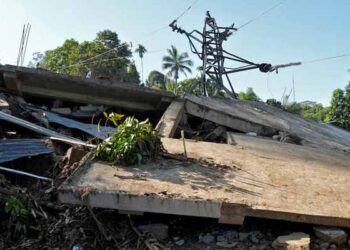Select Language:
Recent torrential rains over the past two weeks have unleashed flash floods and landslides in India’s northern Himalayan regions, resulting in at least 69 fatalities and 110 injuries, as reported by officials on Friday.
Each year, thousands lose their lives during the monsoon season due to flash floods and landslides throughout India, which is home to approximately 1.4 billion residents.
Rivers swelled by heavy rainfall—including the powerful Beas, which originates from the area’s glaciers—have disrupted numerous routes in Himachal Pradesh.
The state’s revenue department issued a statement indicating that the “total toll” of the recent disasters includes 69 deceased individuals and 110 others injured across various incidents over the last two weeks.
On Thursday, India’s meteorological department issued a new alert predicting “heavy to extremely heavy rainfall” in both Himachal Pradesh and the neighboring Uttarakhand state, a beautiful region that attracts many Indian tourists.
The annual monsoon season in India, which spans from June to September, provides relief from the intense summer heat and is vital for replenishing water sources. However, it often brings widespread devastation and loss of life.
In June, heavy monsoon rainfall led to at least 30 fatalities and numerous injuries in India’s remote northeastern region.
This rainfall caused the Brahmaputra, another significant river that originates in the Himalayas, to overflow, impacting nearby towns and villages in Assam.
Reports of landslides and flash floods have also emerged from Arunachal Pradesh, Mizoram, and Manipur, prompting authorities to enlist the Indian military for assistance in rescue and relief endeavors.
As South Asia experiences rising temperatures and shifting weather patterns, scientists remain uncertain about the exact impact of climate change on monsoon behavior.
Last month, Mumbai, India’s financial capital, was inundated with monsoon rain arriving nearly two weeks earlier than usual, marking the earliest onset in close to 25 years, according to meteorologists.






